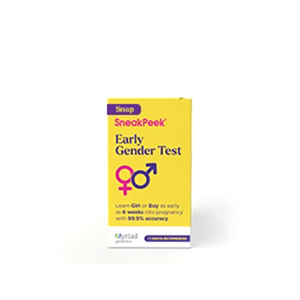Published on December 20th, 2019 and Updated on March 18th, 2021
When you first find out you’re pregnant, you may be certain about some things, such as your baby’s gender, but you may be worried or unsure about taking time off once you have the baby.
The U.S. is one of the only countries in the world that hasn’t passed laws requiring companies to provide paid maternity leave, a paid period of absence that allows for new mothers and fathers to bond with their newborn.
What is Maternity Leave?
Maternity leave is a period of absence that is regulated by the Family Leave and Medical Act of 1993 (FMLA). Companies with 50 or more employees are required to give new moms 12 weeks of leave. Whether it’s paid or unpaid is left up to the company.
Researchers find that it is important for the development of children and the family unit that fathers and mothers be able to participate in early childrearing or in the care of family members who have serious health conditions. The U.S. Department of Labor states that the purpose of the FMLA in regards to maternity leave is to “balance the demands of the workplace with the needs of families, to promote the stability and economic security of families, and to promote national interests in preserving family integrity.”
Is Maternity Leave Paid?
Maternity leave does not have to be paid by federal law. A company can choose to give its employees paid leave, or they may qualify for short-term medical disability pay under the company’s insurance plan. There are also some states that require paid leave.
States with Paid Maternity Leave
The states with mandatory paid maternity leave are:
- California – Assembly Bill 908 Disability Compensation: Disability Insurance
- New Jersey – Temporary Disability Benefits Law
- New York – Paid Family Leave Benefits Law (s6406-c, Part SS)
- Rhode Island – Paid Family Leave Law (Temporary Caregiver)
- Washington D.C. – Universal Paid Leave Act
- Washington State (January 1st, 2020) – Paid Family Leave Law (S.B. 5975)
All states that have paid maternity (those listed above) differ on the specifics of what they require. Some states (California & New Jersey) require disability insurance while others require paid benefits.. However, what they all have in common is the fact that they allow employees (regardless of the company they work with) who are a biological parent, or who are a domestic partner or civil union partner of the biological parent of a newborn, to take off an allotted period of time (the amount of time varies with each state) to provide care for their newborn child. This also applies to the placement of a child for adoption or foster care with the new parent.
Companies with Paid Maternity Leave
Companies within the United States that are known to have top maternity policies are:
- Deloitte – On average, new moms receive up to 22 weeks of paid time off, and new dads receive an average of 16 weeks.
- Facebook – Both new mothers and fathers are given four months of paid leave, regardless of country of residence.
- Microsoft – All new mothers who recently gave birth are given five months of paid leave, and fathers and adoptive/foster parents are given three months of paid leave.
- Netflix – A astounding 12 months of paid time off is offered to both new mothers and fathers with the ability to come back as part-time within the year if they desire.
- Reddit – Employees earn four months of parental leave with a flexible return-to-work option.
- Spotify – Both new moms and dads receive six months parental leave.
- Twitter – “Gender-neutral” parental leave and up to 20 weeks of full pay are offered to employees.
How Does Short-Term Disability (STD) Insurance Work?
Applying for short term disability for maternity leave can be a confusing process. After delivery, however, it is a time during a new mother’s employment where she may experience income loss due to illness or injury. If this is a coverage route that new mothers are considering, keep in mind that the coverage wouldn’t go into effect until after the mother has given birth.
There are different ways to apply for STD, the first being a voluntary plan for maternity leave when pregnant. This is the only type of group coverage that pays towards claims for childbirth. This coverage plan, offered by employers, also allows you to keep the policy no matter where you work.
Another way to apply for short-term disability insurance is to take out an individual policy. This option, paid for by the employee, has fewer advantages, because it does not make claim payments towards childbirth.
If you’re interested in applying for short-term disability insurance specifically for maternity leave, it’s important to note that you must have the insurance prior to being pregnant in order to leverage it. If you do have STD, don’t wait to find out about the details of your company’s disability policy — look into it during the first trimester of pregnancy.
Am I Eligible for Maternity Leave?
If paid maternity leave is not available to you, there could still be an unpaid option. In order to be eligible for unpaid maternity leave, expecting mothers have to be employed with a company that employs 50 or more employees within 75 miles for at least 1,250 hours over the last 12 months. However, if the applicant’s salary accounts for the top 10% of wages, the company can deny the request for leave if the absence of the requesting employee will harm the organization financially.
If you aren’t eligible for maternity leave, look at vacation time, sick time, and unpaid time off, and talk to the Human Resources representative at your company.
When Should I Take Maternity Leave?
Most companies require a 30-day notice informing them of the anticipated leave date, so they can prepare the company to make any changes that may be necessary during the absence of the employee. It’s suggested to plan ahead and consider taking it before the expecting mother’s due date to minimize complications. However, most mothers can take their maternity leave as early as 11 weeks before their due date, or choose to work until their due date. When thinking about time off, it is important to consider potential medical factors. For example, if an expecting mother is wanting to work until her due date, but goes into labor early, her paid maternity leave will start the day she went into labor.
Pay attention to the signs your body is giving you. If you’re often tired, have frequent body aches and lack the motivation to complete your work, it may be a good idea to take your leave sooner rather than later.






